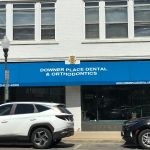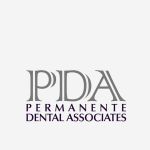- 1-understanding-tooth-enamel-erosion
- 2-primary-causes-of-tooth-enamel-erosion
- 3-recognizing-symptoms-of-enamel-erosion
- 4-effects-of-enamel-erosion-on-dental-health
- 5-effective-prevention-strategies-for-enamel-erosion
- 6-professional-treatment-options-for-enamel-erosion
1. Understanding Tooth Enamel Erosion
Tooth enamel is the hardest substance in the human body, serving as the protective outer layer of teeth. However, despite its strength, enamel can gradually wear away through a process called enamel erosion. This erosion weakens teeth, making them susceptible to decay, sensitivity, and other dental problems. Recognizing the causes of tooth enamel erosion, its symptoms, and prevention techniques is crucial to maintaining long-term oral health.
Enamel erosion differs from tooth decay in that it is primarily caused by acid wear rather than bacterial activity. Over time, acids from food, beverages, or stomach acids can dissolve the mineral content in enamel, leading to thinning and damage. This subtle yet destructive process often progresses unnoticed until symptoms become apparent.
Understanding this process enables individuals to identify risks early and adopt preventive habits. Dentistry Toothtruth emphasizes education as a cornerstone of oral care, encouraging patients to be proactive in protecting their enamel.
2. Primary Causes of Tooth Enamel Erosion
The causes of tooth enamel erosion are multifaceted and often interrelated. They include dietary habits, medical conditions, and lifestyle factors that expose teeth to acidic environments.
2.1 Acidic Foods and Beverages
Consuming high amounts of citrus fruits, sodas, sports drinks, and vinegar-based foods introduces acids that can wear down enamel. Frequent sipping or prolonged exposure exacerbates this effect. For instance, a study found that individuals who drink soda multiple times daily have significantly higher enamel erosion rates compared to those with moderate or rare consumption.
2.2 Gastroesophageal Reflux Disease (GERD)
GERD causes stomach acids to flow back into the mouth, exposing teeth to potent acid attacks regularly. This medical condition is a leading cause of intrinsic enamel erosion, often unnoticed by patients until extensive damage occurs.
2.3 Dry Mouth and Reduced Saliva
Saliva naturally neutralizes acids and helps repair enamel by supplying minerals. Conditions or medications that reduce saliva production increase the risk of enamel erosion due to prolonged acid exposure.
2.4 Poor Oral Hygiene and Abrasive Habits
Using abrasive toothpaste or brushing too hard after consuming acidic foods can accelerate enamel wear. Improper oral care practices compound the damage initiated by acid exposure.
3. Recognizing Symptoms of Enamel Erosion
Early detection of enamel erosion symptoms is key to preventing irreversible damage. Common signs include:
- Increased Tooth Sensitivity: Sensitivity to hot, cold, or sweet stimuli signals thinning enamel exposing dentin.
- Visible Tooth Discoloration: Enamel loss reveals the underlying yellowish dentin, causing teeth to appear darker.
- Rounded or Translucent Edges: Teeth may look smoother or thinner, especially at the biting surfaces.
- Surface Texture Changes: Enamel may feel rough or uneven, sometimes with small indentations called cupping.
Patients experiencing these symptoms should consult their dentist promptly to evaluate the extent of erosion and discuss treatment options.
4. Effects of Enamel Erosion on Dental Health
Unchecked enamel erosion compromises tooth integrity and oral health in several ways:
4.1 Increased Risk of Cavities and Decay
Enamel acts as the primary defense against bacterial invasion. When it thins, teeth become vulnerable to cavities, accelerating decay processes.
4.2 Heightened Tooth Sensitivity and Pain
Exposed dentin contains microscopic tubules connected to nerve endings. Acid erosion that reaches dentin causes discomfort and sharp pain, especially during eating or drinking.
4.3 Aesthetic Concerns and Structural Damage
Enamel erosion can lead to visible wear, cracks, or chips, affecting smiles and self-confidence. Severe erosion may require restorative treatments to rebuild tooth structure.
5. Effective Prevention Strategies for Enamel Erosion
Preventing tooth enamel erosion involves lifestyle modifications and dental care routines tailored to reduce acid exposure and strengthen enamel.
5.1 Dietary Adjustments
Limit intake of acidic foods and beverages, and avoid frequent sipping. Drinking through a straw can minimize contact with teeth. Rinsing the mouth with water after acidic meals helps neutralize acids.
5.2 Maintain Good Oral Hygiene
Use a soft-bristled toothbrush and fluoride toothpaste to clean teeth gently. Avoid brushing immediately after consuming acidic foods; wait at least 30 minutes to prevent further enamel wear.
5.3 Manage Medical Conditions
If you have GERD or dry mouth, seek medical treatment to reduce acid exposure and increase saliva flow. Discuss with your dentist about saliva substitutes or protective treatments.
5.4 Regular Dental Checkups
Frequent visits to your dentist allow early detection and intervention. Professional fluoride treatments or dental sealants can provide extra protection.
6. Professional Treatment Options for Enamel Erosion
When enamel erosion progresses, dentistry offers various restorative solutions:
6.1 Fluoride Treatments
Topical fluoride strengthens remaining enamel and helps remineralize early erosion spots.
6.2 Dental Bonding and Veneers
For visible damage or sensitivity, composite bonding or porcelain veneers restore tooth appearance and function.
6.3 Crowns
Severe erosion compromising tooth structure may require crowns to protect and rebuild teeth.
For personalized advice and effective products, visit Dentistry Toothtruth to find the best options tailored to your dental health needs.







 Pulido Dental Care4.0 (23 review)
Pulido Dental Care4.0 (23 review) Harbor Care Health and Wellness Center4.0 (154 review)
Harbor Care Health and Wellness Center4.0 (154 review) Downer Place Dental & Orthodontics4.0 (634 review)
Downer Place Dental & Orthodontics4.0 (634 review) Martineau Dentistry4.0 (800 review)
Martineau Dentistry4.0 (800 review) Permanente Dental Associates, P.C.0.0 (0 review)
Permanente Dental Associates, P.C.0.0 (0 review) Dr. Surya Bhavaraju0.0 (0 review)
Dr. Surya Bhavaraju0.0 (0 review) The Importance of Oral Health Education During Pregnancy for a Healthy Pregnancy
The Importance of Oral Health Education During Pregnancy for a Healthy Pregnancy Best Tips for Brushing Your Teeth Properly for Healthy Gums: Essential Techniques for Oral Health
Best Tips for Brushing Your Teeth Properly for Healthy Gums: Essential Techniques for Oral Health Why Skipping Dental Checkups Can Lead to Bigger Oral Health Problems
Why Skipping Dental Checkups Can Lead to Bigger Oral Health Problems Advantages of Porcelain Dental Restorations
Advantages of Porcelain Dental Restorations How Can Diabetes Cause Tooth and Gum Problems? Preventing and Managing Oral Health Issues
How Can Diabetes Cause Tooth and Gum Problems? Preventing and Managing Oral Health Issues Healthy Habits for Promoting Good Oral Health and Hygiene: Tips for a Healthy Smile
Healthy Habits for Promoting Good Oral Health and Hygiene: Tips for a Healthy Smile